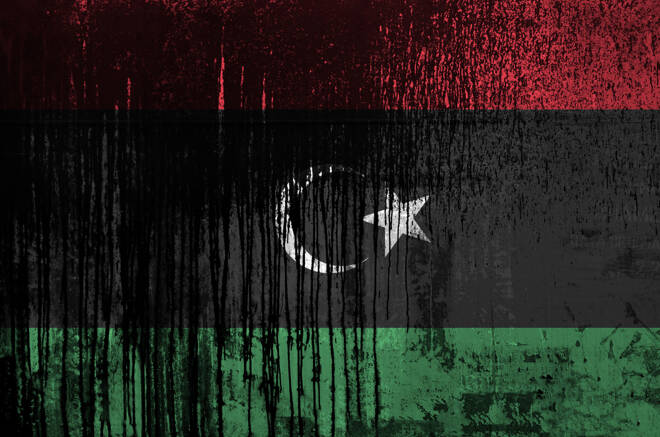Advertisement
Advertisement
Libyan Turmoil Results In Force Majeure, Market Shortage Increasing?
Updated: Apr 25, 2022, 18:05 GMT+00:00
Libyan oil exports under force majeure as political crisis increases
Key Insights
- NOC declares force majeure Brega Zueitina terminals.
- Libyan production is down to 600,000 bpd.
- OPEC+ production gap increasing.
One of OPEC’s main crude oil producers Libya is again back to a crisis situation. Libya’s National Oil Company (NOC) had to declare a force majeure on its crude oil exports due to renewed strikes at several major oil producing fields in the country. NOC also stated that it had to close the second export terminal in Brega. The country again is back to a possible civil war situation, which is now brewing due to a high level of political crisis.
The last two days, NOC had to announce a force majeure on the Brega terminal, after that on Monday already the Zueitina port and several oil fields in the so-called Oil Crescent had to be shut down too.
A force majeure is in place to allow parties to free themselves from contractual obligations when factors such as fighting or natural disasters make meeting them impossible. On Monday, NOC already put a force majeure on the Al Sharara oil field. The latter field was hit by major strikes. Until now no real attacks have occurred on oil fields the last weeks, but Libya is known for its armed groups targeting its oil and gas infrastructure.
Political crisis Tripoli – Haftar increasing
The country is hit again by political infighting as the two main parties in the country are battling for power. Since February a political crisis is in place, after that the eastern Libyan parliament appointed a new leader, directly challenging the UN brokered government in the capital Tripoli.
The current power struggle is very dangerous, as it puts Prime Minister Abdulhamid Dbeibah’s interim government in a confrontation with former interior minister Fathi Bashagha, who was chosen by the parliament. Some analysts are warning that a new power struggle could emerge, as the eastern parties are targeting a full-takeover again of power.
At the same time, groups are currently blocking oil facilities, demanding higher income and a transfer of power to Bashagha. The current crisis has taken around 600,000 bpd of crude oil production offline, which is almost half of Libya’s current daily output. Libya’s NOC also has warned that a full stop of the production at the Sirte Oil and Gas Company will be threatening the stability of the national electricity grid. Most of the power plants of the country are taking natural gas from the latter’s fields.
Outfall Russia-Ukraine to hit Libya?
Some analysts are worried that the Libyan situation could become even more volatile. As the eastern power factions, which are led by Libyan general Haftar, are linked to Russian and Arab countries, a possible fall-out of the Russian invasion of the Ukraine is partly behind the current unrest.
Moscow could be looking at destabilizing Libya further to put increased pressure on global oil and gas markets, at a time that Europe is desperately seeking additional oil and gas supplies to counter a possible Russian energy sanctions regime. At the same time, unrest on the southern rim of the Mediterranean is threatening not only new waves of migrants but also destabilizes North Africa as a whole.
OPEC production gap still increasing, market under pressure?
At the same time that global oil markets are reeling, trying to counter a possible Russian oil and gas gap the coming months, OPEC is under scrutiny too. Not only due to possible internal conflicts, such as the current Libyan developments or Iran, but also based on the ongoing struggle of the oil group to produce its announced quotas to the fullest. At present OPEC+ (OPEC, Russia and others) are showing a 1.4 million bpd production gap in March, partly due to lower Russian crude oil availability, as sanctions and self-sanctioning of buyers is starting to hit.
In March, OPEC+ reported a combined crude oil production gap (based on quota) of 1.45 million bpd, while compliance rate increased to 157%. Market parties stated that Russian oil production was 300,000 bpd below the target. The March figures of OPEC+ show that the production increases, in comparison to the 1 million bpd gap reported in February.
OPEC only has increased its oil production by around 57,000 bpd in March, mainly due to production constraints in Africa. With the current Libyan crisis in play, the gap is expected to widen substantially, while other countries are facing an uphill battle too.
About the Author
Cyril Widdershovenauthor
Dr. Widdershoven is a veteran Energy market expert and holds several advisory positions at various international think-tanks and global Energy firms.
Advertisement
